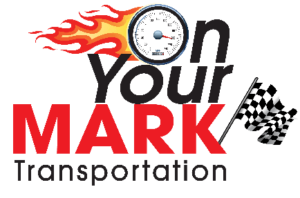As global emissions rise, the urgency to balance economic, environmental, and social systems grows ever more critical. Sustainability is no longer an option. It’s a necessity for the health of our planet and future generations. The transportation sector, responsible for nearly 24% of global CO2 emissions, according to the International Energy Agency (IEA), plays a significant role in this challenge. One impactful way to combat these emissions? Reducing the number of single-occupancy vehicles (SOVs) on the road.
During the holiday season, this challenge becomes particularly pronounced. The weeks leading up to major holidays like Thanksgiving, Christmas, and New Year’s Day see a dramatic increase in road traffic. Cities like New York, Los Angeles, and Chicago experience traffic surges of 30% to 40% during peak shopping and travel days, turning routine commutes into hours-long gridlocks. This congestion not only increases travel times but also leads to higher emissions due to idling vehicles.
How Public Transportation Can Help
Public transportation, especially inner-city buses, offers an effective solution to mitigate the challenges of holiday travel. By reducing the number of cars on the road, buses can significantly decrease both traffic congestion and emissions. Here’s how:
- Fewer Cars, Less Congestion. Each bus can carry dozens of passengers, potentially replacing 20 to 40 individual vehicles on the road. This not only eases traffic flow but also creates smoother commutes for everyone.
- Lower Emissions. A fully occupied bus emits far less CO2 per passenger compared to individual cars. For example, a single city bus can reduce greenhouse gas emissions by 4.3 metric tons annually for every 10 miles traveled, according to the Environmental Protection Agency (EPA). During the holidays, when traffic congestion is at its peak, these reductions become even more impactful. In fact, studies show that during peak holiday travel, CO2 emissions from transportation can increase by up to 25% compared to average days, due to extended idling and stop-and-go traffic.
- Accessibility for All. Inner-city buses provide an affordable and widely accessible transportation option, especially for individuals who don’t own cars, are unable to drive, or simply prefer not to deal with the stress of holiday traffic. For many urban residents, buses are a lifeline to reach shopping centers, holiday events, and family gatherings.
Encouraging Bus Usage During the Holidays
For public transportation to make a significant dent in holiday traffic and emissions, more people need to embrace buses as a viable travel option. Here are a few ways to make the most of inner-city buses during the holiday season:
- Plan ahead. Check bus schedules and plan trips in advance to account for any changes during the holidays. Many transit systems offer extended hours or special holiday routes for shoppers and event goers.
- Use Technology. Take advantage of transit apps to track buses in real time and stay informed about delays or route updates.
- Travel Off-Peak. If possible, travel during non-peak hours to avoid crowded buses and heavy traffic.
- Support Public Transit. Advocacy and investment in public transportation infrastructure can ensure buses remain a sustainable and efficient option for urban mobility.
A Step Toward Sustainability
Choosing buses over cars during the holidays is a simple yet impactful way to contribute to sustainability. Each decision to leave a car at home and hop on a bus helps reduce traffic congestion, minimize emissions, and ease the collective stress of holiday travel. Given that public transportation is nearly 5 times more energy-efficient per passenger mile than private vehicles, it is an eco-friendly choice for holiday travelers. Public transportation isn’t just a convenience—it’s a critical tool for building greener, more livable cities.

